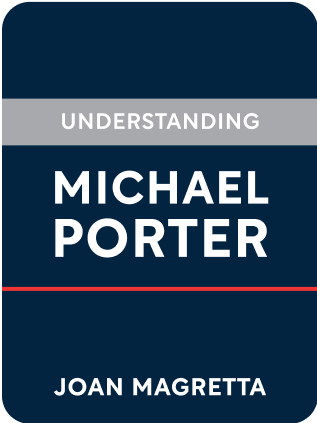

This article is an excerpt from the Shortform summary of "Understanding Michael Porter" by Joan Magretta. Shortform has the world's best summaries of books you should be reading.
Like this article? Sign up for a free trial here .
What is an activity system map? Introduced by Michael Porter, it’ll help you visualize and plan your business goals.
An activity system map can help understand the flow of your business and the operations, from supply to buyer. Using an activity system map, you can hone your business strategy and find a strategy that gives you a competitive edge.
Activity System Map
To visualize the strength of fit between activities, place the activities on a map.
- Start by placing the key components of the value proposition.
- Make a list of the activities most responsible for competitive advantage
- Add each activity to the map. Draw lines wherever there is fit: when the activity contributes to value proposition, or when two activities affect each other
Here’s an example for IKEA:
A densely interconnected activity map is a good sign. A sparsely connected map shows weak strategy.
The activity map isn’t useful just for description of your current strategy. It can also be used for ideation for new strategies:
- Can you improve fit between activities?
- Can you find ways for an activity to substitute for another?
- Can you find new activities or enhancements to what you already do?
- Are there new products or features you can offer because of your activity map, that rivals will find difficult to emulate?
Maintaining Strategy
Continuity doesn’t mean an organization should stand still. As long as there is stability in the core value proposition, there should be innovation in how it’s delivered.
First, companies must stay on the frontier of operational effectiveness. You must assimilate best practices that do not conflict with your strategy or cause negative trade-offs.
- BMW embraced OE improvements to decrease design time, but stopped short of steps that would remove its unique design language.
Second, you must change whenever there are ways to extend your value proposition or better ways to deliver it.
- Reuter started with spreading market information through pigeons, then moving onto telegraph and the Internet.
- Netflix began with direct to customer movie DVDs, then switched to Internet streaming as soon as it became feasible.
Adapting Strategy to Changes
Unlike what some argue, a rapidly changing environment is not an excuse to avoid strategy. Their flawed thinking goes: “Strategy requires a prediction of the future. I can’t predict the future. Therefore, I can’t commit to a strategy.” They try to stay flexible by avoiding commitment.
But flexibility never allows the company to stand for anything or become great at anything. The mass of competitors will yield more focused rivals with clear value propositions who will attract customers instead.
Says former Ford CEO Alan Mulally: “Strategy is about a point of view about the future and then making decisions based on that. The worst thing you can do is not have a point of view, and not make decisions.”
Great strategies are rarely built on a concrete prediction of the future. They’re just based on a broad sense of which customers and needs are going to be robust 5-10 years from now. Strategy is implicitly a bet that these needs, and the accompanying trade-offs, will be enduring.
- Southwest bet that people would continue to want low-cost convenient transportation.
- In-N-Out bet that people would continue to want simple fresh burgers and fries.
A strategy is a guiding force that shows you how to adapt to the new world. You know who you’re trying to serve, what needs you’re trying to meet, and your price – this filters what matters and makes priorities clearer.
- Without a strategy, a clear value prop, you don’t know which changes are relevant to your org, and you get distracted by every shiny object. It’s debilitating to embrace every new technology coming your way.
When Should Environmental Changes Prompt Strategy Changes?
- When changing customer needs mean a company’s core value proposition becomes obsolete.
- Blockbuster’s focus on physical stores faltered when customers were content browsing a catalog online and renting for cheaper prices.
- When innovation invalidates the trade-offs on which a strategy relies.
- Dell’s cost advantage was neutralized by the rise of Taiwanese Original Design Manufacturers, which let rivals outsource design and assembly to efficient producers.
- When a technological or managerial breakthrough trumps a company’s existing value proposition. A truly disruptive technology invalidates current value chains and makes it difficult for incumbents to match because of their existing assets.
- Kodak was disrupted by digital photography.
- (Shortform example: Google replaced physical Yellow Page books, which used to be delivered to people’s homes. Much of the publishing and delivery components of the Yellow Pages were invalidated by the Internet.)
Often, though, seemingly disruptive changes can actually be integrated into your value chain without meaningfully changing the industry structure. Many industries adopted the Internet, and the fundamental structure of the industry didn’t change.
An activity system map is a useful tool for developing your business strategy. When you create an activity system map, you’re able to chart out your business and understand it’s systems.

———End of Preview———
Like what you just read? Read the rest of the world's best summary of Joan Magretta's "Understanding Michael Porter" at Shortform .
Here's what you'll find in our full Understanding Michael Porter summary :
- How Porter's famous Five Forces help you analyze every industry
- How IKEA, Southwest Airlines, and Zara have ironclad, defensible strategies
- Why the best companies reject opportunities to focus on what they know






